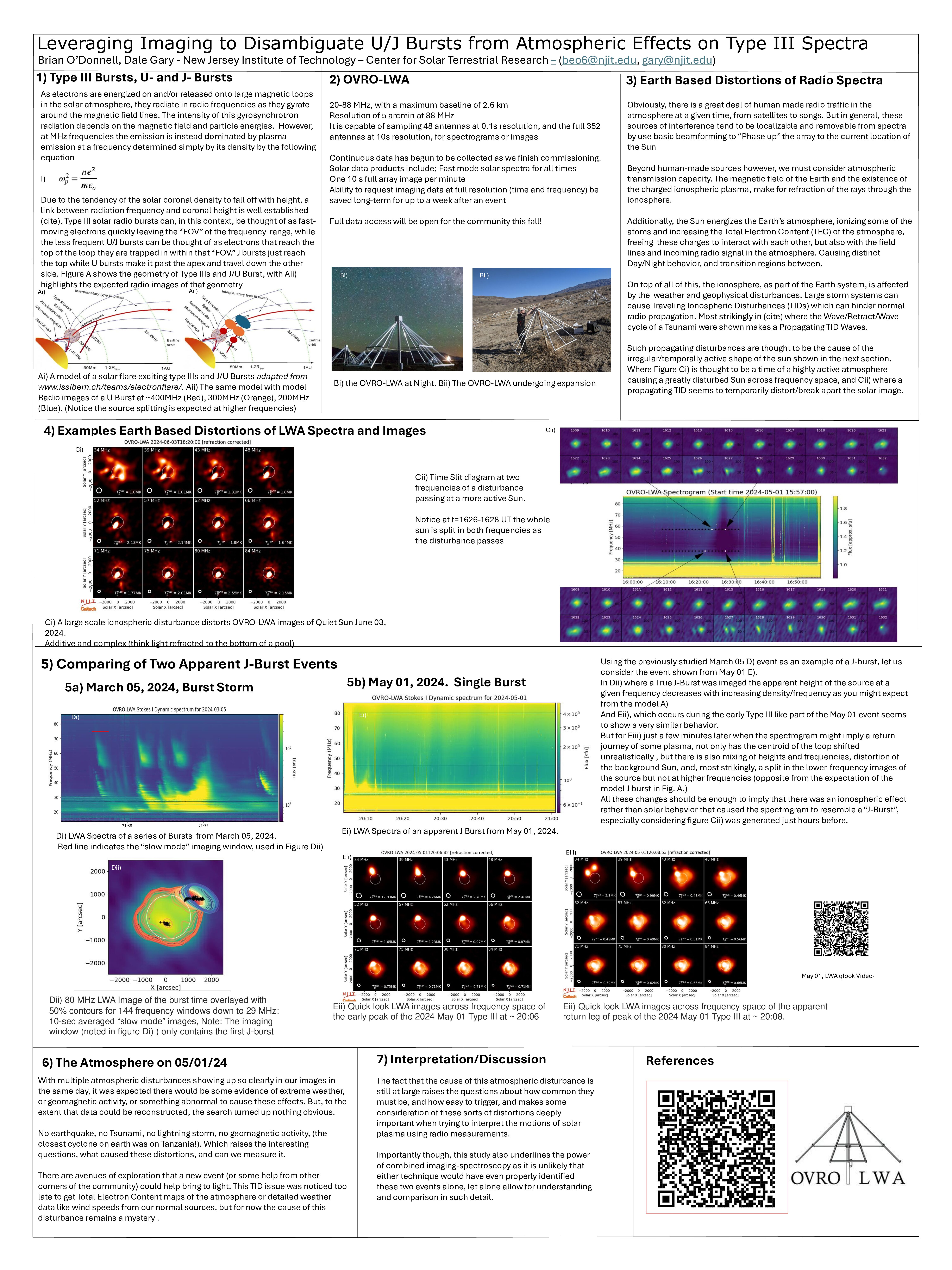Authors: Brian O'Donnell (NJIT-Center for Solar Terrestrial Research), Dale E. Gary (NJIT-Center for Solar Terrestrial Research), Surajit Mondal (NJIT-Center for Solar Terrestrial Research)
By taking advantage of the OVRO-LWA’s high-frequency resolution imaging capabilities, dynamic spectral imaging is available at 0.5 MHz frequency resolution, from 28MHz-88MHz. This allows for the study of many solar phenomena in new detail. For proper analysis of these data, however, one must also consider the possibility of the ionospheric disturbances to the measurement.
Here in, we examine a Type III radio burst from 2024 May 5th with sufficient data to give enough imaging and frequency resolution to observe the apparent motion of the burst, and directly measure the apparent source location over time. The location and morphology of the sources however, are distorted by the passing of an ionospheric wave. A periodic darkening which can be seen in the spectrogram also coincides with motions and splitting of sources, which at first could be mistaken for a U-Burst in a loop, but are also present in the quiet sun areas of the images. This implies something which can diffract or refract radio waves, like the ionosphere, must be changing between the quiet sun and the LWA.
Other events with such distortions, during bursts and periods of quiet sun, will be also examined briefly.


